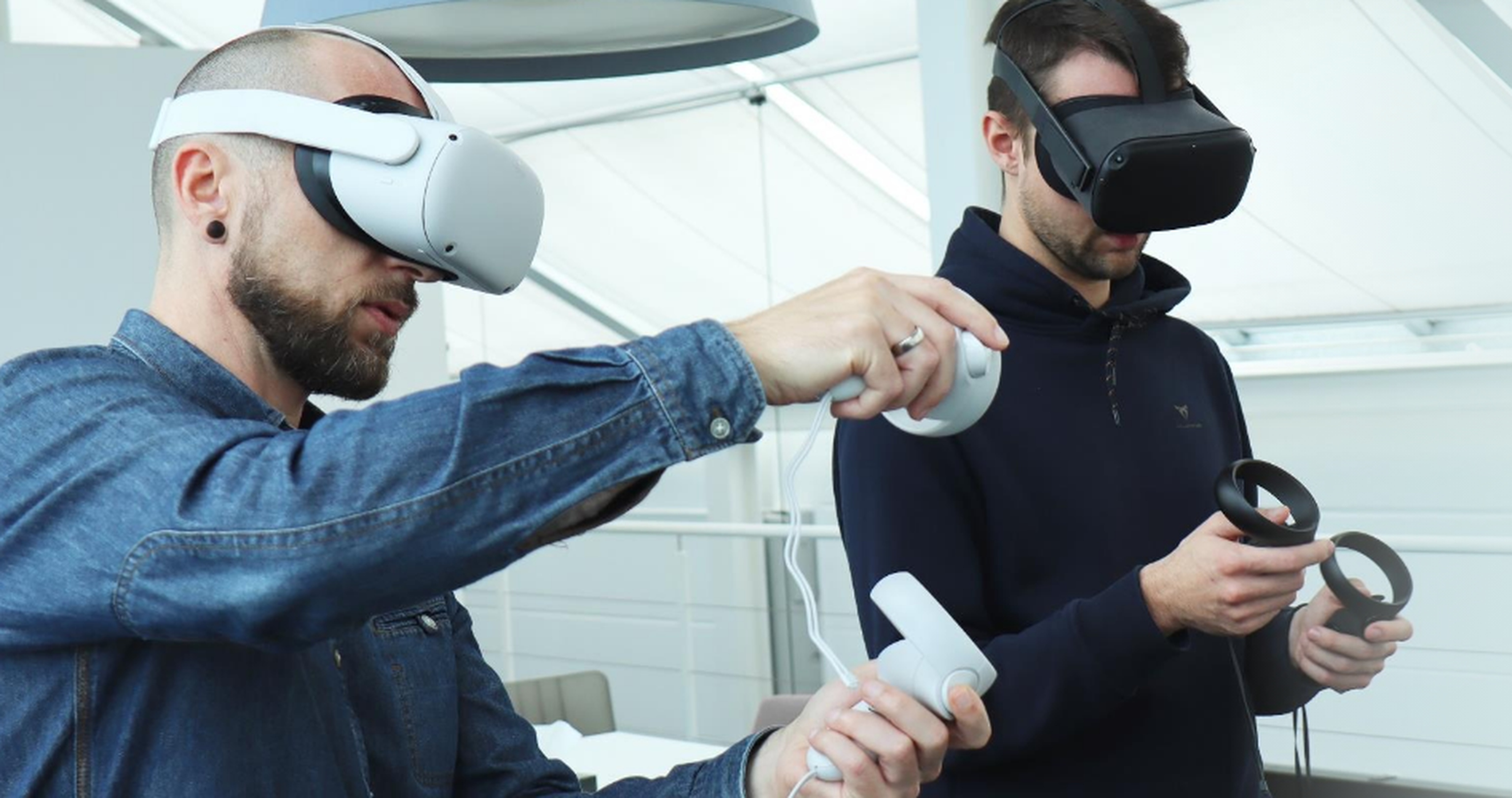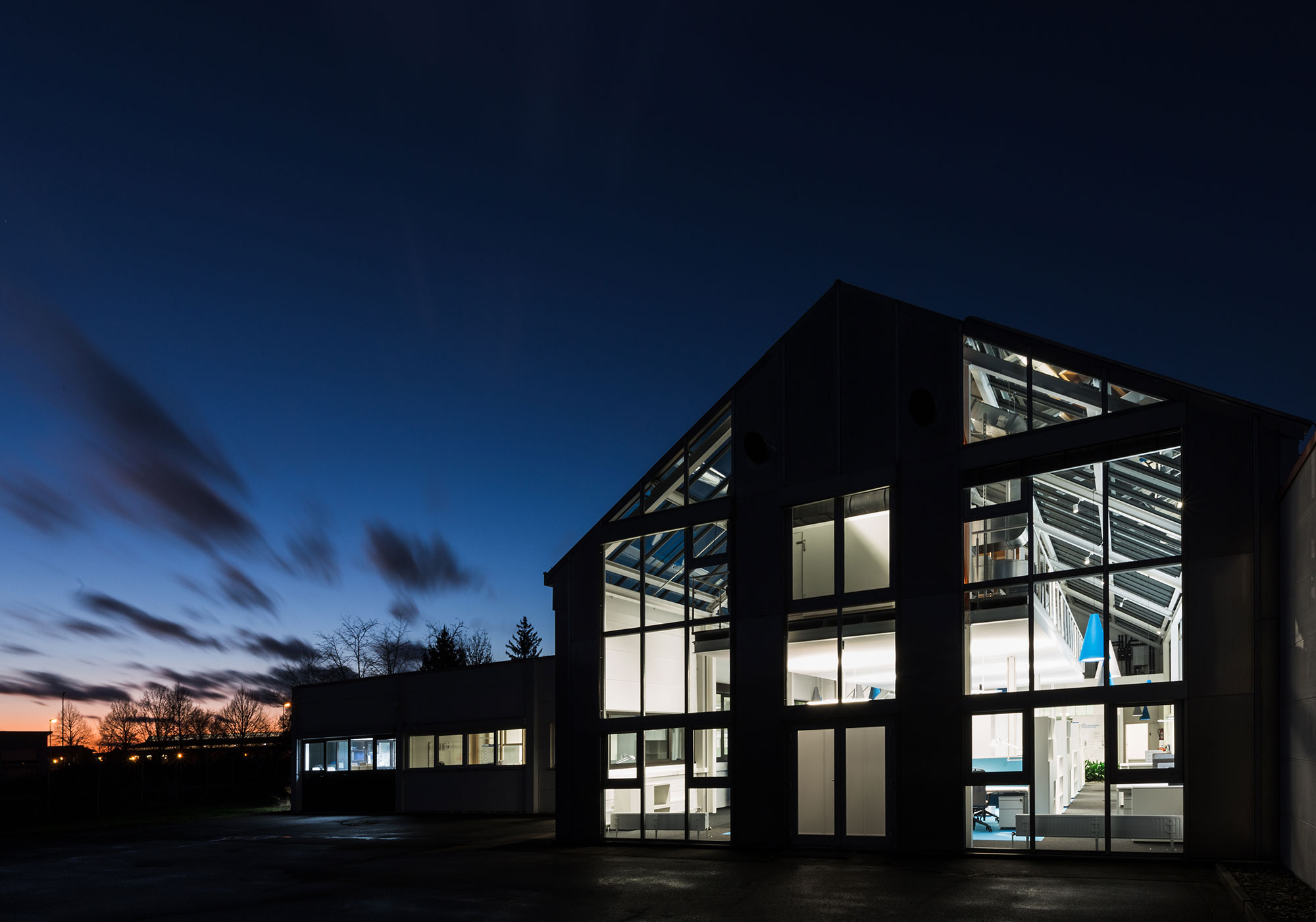
Augmented & Virtual Reality (VR/AR) in product development
VR/AR in the development process: efficiency and precision
A crucial moment in product development is the evaluation of ergonomics, usability, and design. While click dummies test digital concepts and models of physical products, things become complex when both have to be combined. Traditional model making quickly becomes a cost driver here.
Our answer to this is smart, resource-saving VR/AR solutions. Even in the earliest concept phase, we use three-dimensional space to design ideas virtually and coordinate them precisely with the technical package. In VR/AR, different concepts can be visualized in life size and compared with competitors and predecessor products. This 3D data forms a valuable bridge to the next step: it can be imported into CAD programs as a direct reference or used for initial RP models.

Our method in action: The interactive ergonomics model
We make complex operating concepts tangible through hybrid augmented reality. Instead of relying solely on CAD models or expensive prototypes, we combine the best of both worlds into an interactive experience.
The hybrid setup – physical meets virtual
The basis is a physical setup with the most important haptic elements, such as a driver's seat with steering wheel. In the virtual space, we supplement this setup with all variable user interfaces. Joysticks, displays in various sizes, hard keys, and controls are integrated as flexible 3D objects and linked to digital interfaces.
The interactive workshop – customizing design in real time
In a joint workshop, participants experience the concept using VR glasses. All virtual controls are interactive – they can be freely moved, rotated, and tested in their function. The entire team follows the action live on a monitor, discusses possible solutions, and provides direct feedback.
The result – optimal ergonomics and clear savings
This agile approach quickly produces concepts with outstanding ergonomics and usability. There is no need for time-consuming development loops and expensive modifications to physical models. This not only saves valuable time, but also significantly reduces your development costs.
Flexibility for your product – This proven method is not limited to vehicle cabins, but can be applied to any complex product with multiple user interfaces.

Your consent is required. This content is hosted by a third party (www.youtube.com). By showing the external content you accept the the terms and conditions of www.youtube.com.
Our design process in virtual space: tools and methodology
For virtual reality design, we rely on the leading tool “Gravity Sketch.” It allows our team to work on a VR design simultaneously with several people. From initial three-dimensional sketches to precise surface models and complete usage environments, ideas quickly become tangible. These models can be ergonomically tested directly and form the ideal basis for subsequent CAD design suitable for manufacturing.
Creative freedom meets technical precision
The decisive advantage of this method lies in the combination of two worlds: on the one hand, the designer retains the creative, almost artisanal freedom of an analog sketch. On the other hand, they can work with high precision on the underlying technical package. This minimizes obstacles such as purely spatial imagination and significantly reduces the scope for interpretation by external viewers.
Real-time collaboration for better results
The virtual space is designed for collaboration. Multiple team members can work on the same model simultaneously using VR headsets. Gravity Sketch is also available as a desktop version, allowing project participants without VR hardware to easily participate in reviews. This direct collaboration makes it possible to consider ergonomic aspects from the outset—a decisive advantage in user-centered projects.
The customer experience: When design becomes tangible
A special moment in our projects is always when our customers put on the VR glasses themselves. When they literally immerse themselves in their own design in large-scale projects or the virtual design appears within reach in front of them in the room, the full potential of this technology can be experienced emotionally and convincingly.

Overview of the advantages of VR/AR
The use of virtual and augmented prototypes offers clear, measurable advantages for your development process. Instead of waiting for time-consuming and costly model construction, products can be experienced immediately.
Realistic visualization: With augmented reality, your products are displayed in their original size and directly in their future environment. Different colors, materials, and equipment variants can be interactively simulated.
Accelerated coordination processes: Virtual models require significantly less effort to create than physical prototypes. The result is faster decisions and shorter development cycles.
Convincing presentation: Light and shadow effects tailored to the real environment ensure that the virtual design models integrate seamlessly—as if they were already within reach.
A virtual prototype can be an excellent aid in evaluating design and size. However, it cannot and should not completely replace physical prototypes, as aspects such as haptics and final ergonomics are still best evaluated using real models.
Our range of services in VR/AR product development
Every project is unique. That's why we use our proven service modules to develop a tailor-made strategy for your product development in virtual space. Let's work together to define the perfect solution for your goals.
VR/AR product sketches: Rapid visualization of ideas in the early design process
Interactive VR/AR product presentations:
Compelling presentations for stakeholders and customers.
Hybrid VR/AR models: Combination with physical model building and click dummies for well-founded user tests.
Professional product renderings & animations: High-quality marketing materials based on 3D data.
Are you ready to leverage the potential of augmented and virtual reality for your product development? We would be happy to advise you and find the perfect solution for your project.







